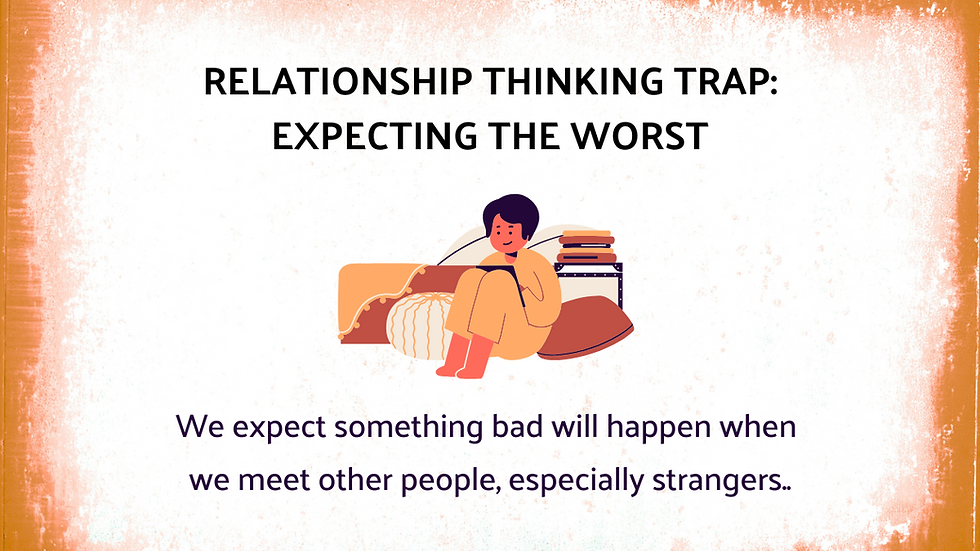Relationship Thinking Trap: Expecting the Worst
- naumitarishi
- Jul 31
- 2 min read
Why fear of harm or rejection keeps us from forming real connections—and how this thinking quietly shapes our relationships.
Have you ever walked into a room and assumed people wouldn’t like you, or that something would go wrong before it even happened?

This is the relationship thinking trap of expecting the worst. A relationship thinking pattern where our minds get wired to predict:
harm, rejection, criticism, or failure when interacting with others—especially with new people or unfamiliar situations.
At its core, this is a protective strategy. The brain believes it's helping us stay safe by preparing us for pain or disappointment before it happens. But in doing so, it blocks genuine connection.
We stop ourselves from speaking up, trusting others, or even giving relationships a chance. We interpret neutral expressions as disapproval. A delay in someone’s reply becomes a sign they are angry. And soon, without realising, we begin to experience loneliness, social anxiety, and emotional exhaustion.
Here’s what it might look like:
You avoid social settings because you believe no one will understand you.
You expect rejection from strangers, colleagues, or even loved ones.
You over-prepare for interactions because you fear being judged.
You replay conversations, convinced you said something wrong.
This relationship thinking trap: expecting the worst; It feeds mistrust and creates distance even before closeness can begin. It makes people feel unsafe, even when no harm is present.
And like most thinking traps, it's sneaky. You may not even realise you’re caught in it. It often comes disguised as “being realistic,” or “just being careful.”
What can help?
First, awareness. Naming the trap. Then slowly, gently, challenging the prediction.
What evidence do I have that this will go badly?
Is it fair to assume this stranger will harm me, or am I reacting to my past?
If the worst doesn’t happen, what could I gain?
Over time, these small thought shifts begin to change our internal safety system. Instead of being in a constant state of alert, we learn to engage with more openness.
Sometimes, it isn’t the world that’s unsafe. It’s our own fear whispering louder than reality.
Did this feel familiar?
You’re not alone. Many of us expect the worst because our experiences taught us to be cautious. But that doesn’t mean we have to stay stuck in the same loop.
✅ Like this post if you related.
🔗 Share it with someone who often fears rejection or harm.
🧵 Leave a comment—what’s your most common worst-case prediction?
🔎 Want to explore more relationship thinking traps? Click the category below and dive into the full series- Thinking Traps in Relationships





Comments